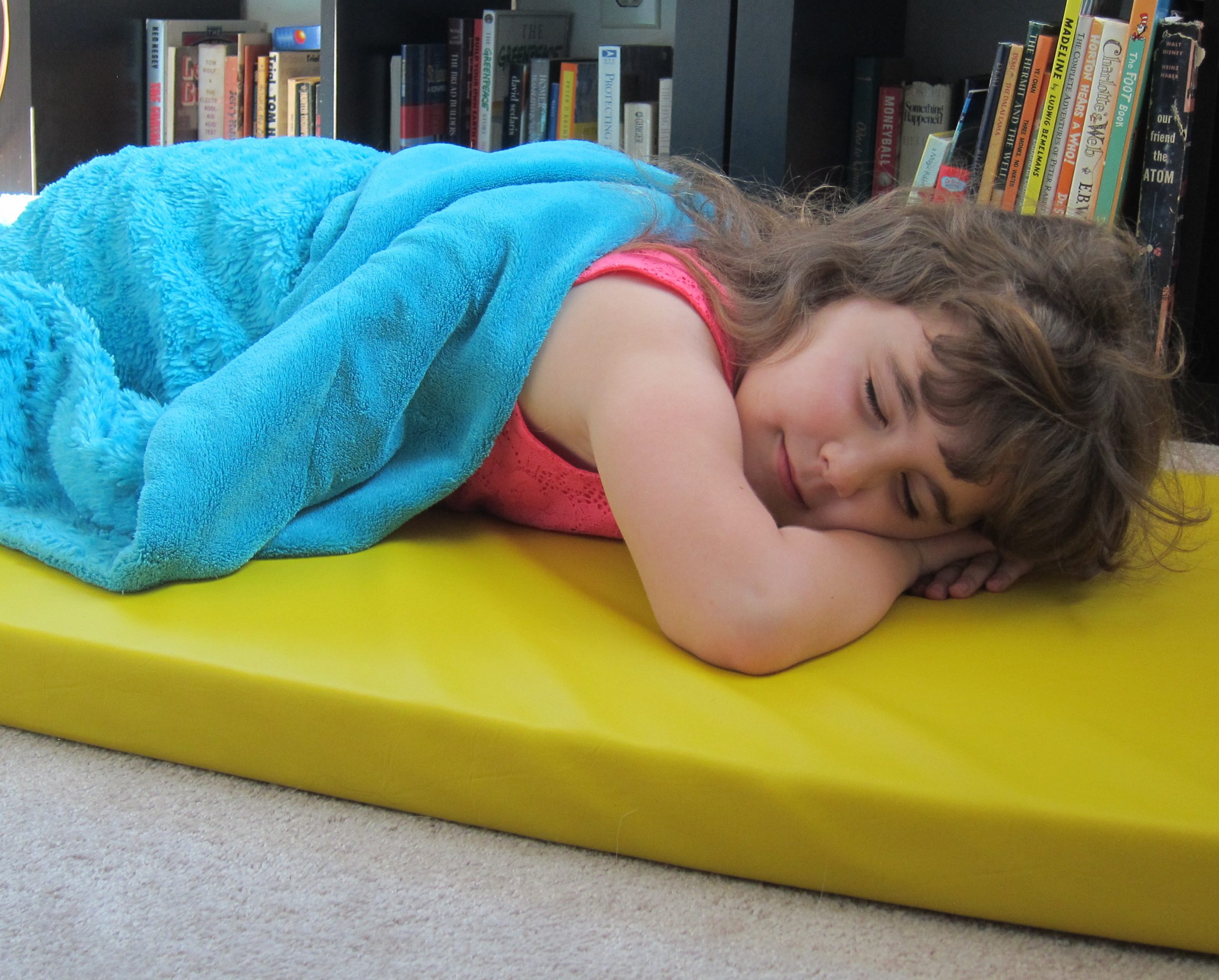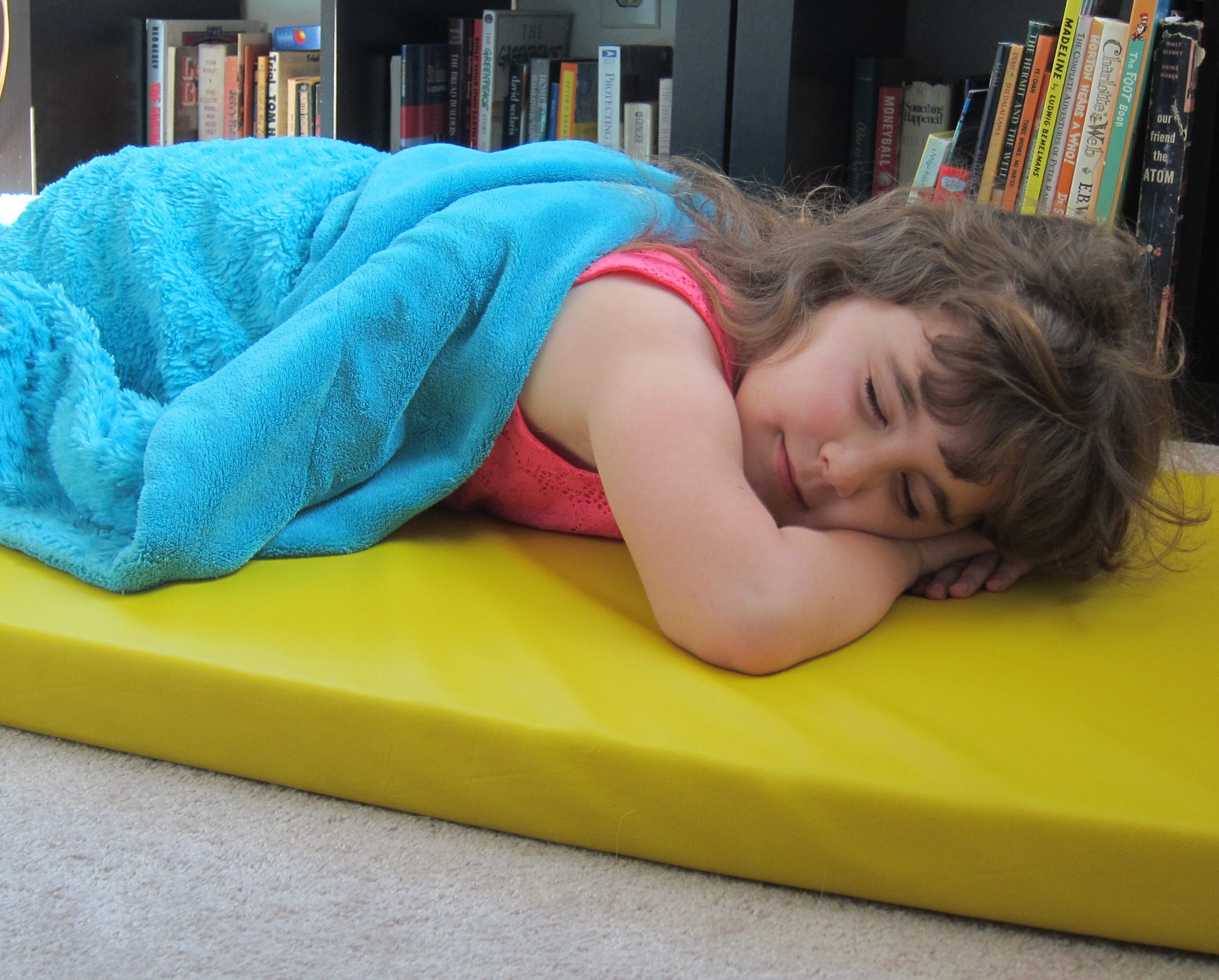
Toxic Flame Retardants Found in Day Care Nap Mats
When we send our kids off to daycare, we know that naptime is part of the routine. What we don’t expect is that the foam padded nap mats our kids are sleeping on might contain dangerous chemicals. New research by the Center for Environmental Health (CEH) found nap mats in California, New York, Washington, Alaska, Massachusetts, Vermont and Connecticut contain harmful flame retardant chemicals.
What did the study find?
The new study by (CEH) found that many children are being exposed to chemicals, some of which have been linked to serious health problems like cancer, obesity, and allergies. There is little publicly available information about the safety of others.
In all, ten flame retardant chemicals were identified. Twenty-two of the twenty-four foam-containing nap mats tested had been treated with at least one chemical flame retardant. Nineteen of the 24 nap mats had been treated with two or more flame retardant chemicals. The most common flame retardant was triphenyl phosphate (TPP), in 18 nap mats, and is linked to lower sperm production and nervous system impacts. We found chlorinated Tris (TDCPP), known to cause cancer, in nine mats.
The nap mat that I submitted from Brooklyn, NY, contained both of those as well as a third combination of chemicals we are calling “Tert-butyl mixture” (sometimes also called a TBPP mix).
The nap mats were purchased from major retailers, including Target and Babies R Us, and from online suppliers, and three of the mats were in use at daycares. All nap mats were tested by an independent lab at Duke University, by one of the country’s leading researchers on flame retardants in consumer products, Dr. Heather Stapleton.
Why are these chemicals in nap mats & how are our kids exposed?
The toxic exposure occurs because chemical flame retardants are frequently added to foam. At first glance, this seems to make some sense – foam burns easily. However, government studies have shown that flame retardants in foam-containing products do not improve fire safety as they are typically used and can actually make fires less-survivable.
Children are exposed to flame retardants from nap mats as they breathe at naptime, and also when they play in areas where the nap mats are stored. Children can also be exposed when flame retardants settle on their skin, and when they touch and ingest dust particles that flame retardants have settled on.
What is being done to fix the problem?
In December, CEH initiated legal action against retailers and suppliers of baby products and nap mats for unlabeled products containing the flame retardant chlorinated Tris. On Friday, CEH filed lawsuits alleging violation of California consumer protection law against nap mat suppliers. “There is no reason parents should have to worry that their children will be exposed to chemicals that can cause cancer and other serious problems when they take a nap at daycare,” said Caroline Cox, the author of the CEH study.”
What can you do?
- Support state efforts to provide toxic-free fire safety (see state action below).
- Take action to support flame retardant free furniture and baby products.
- Support the Safe Chemicals Act, an effort to fix our nation’s outdated chemical policy regulations.
In the meantime parents and child care providers can:
- Purchase nap mats made without polyurethane foam. Options that are not usually treated with flame retardants are polyester fiberfill, cotton, and wool.
- Ask nap mat suppliers about their use of flame retardant chemicals, and purchase products from companies that pledge they no longer use any of these chemicals.
- Frequently vaccum and wash yours and your children’s hands to help minimize exposures.
For information about pending state actions:
(Is your state not listed below? No prob! Take action here!)
· Alaska – Alaska Community Action on Toxics
· California – Center for Environmental Health and CHANGE.
· Connecticut – Coalition for a Safe and Healthy Connecticut
· Illinois – Illinois PIRG
· Maine – Environmental Health Strategy Center
· Maryland – Maryland PIRG, www.marylandpirg.org
· Massachusetts – The Alliance for a Healthy Tomorrow
· New York – Clean and Healthy New York
· Vermont – Vermont PIRG
· Washington – Washington Toxics Coalition
You can view the full report here. And follow CEH on Twitter: @GenGrn




